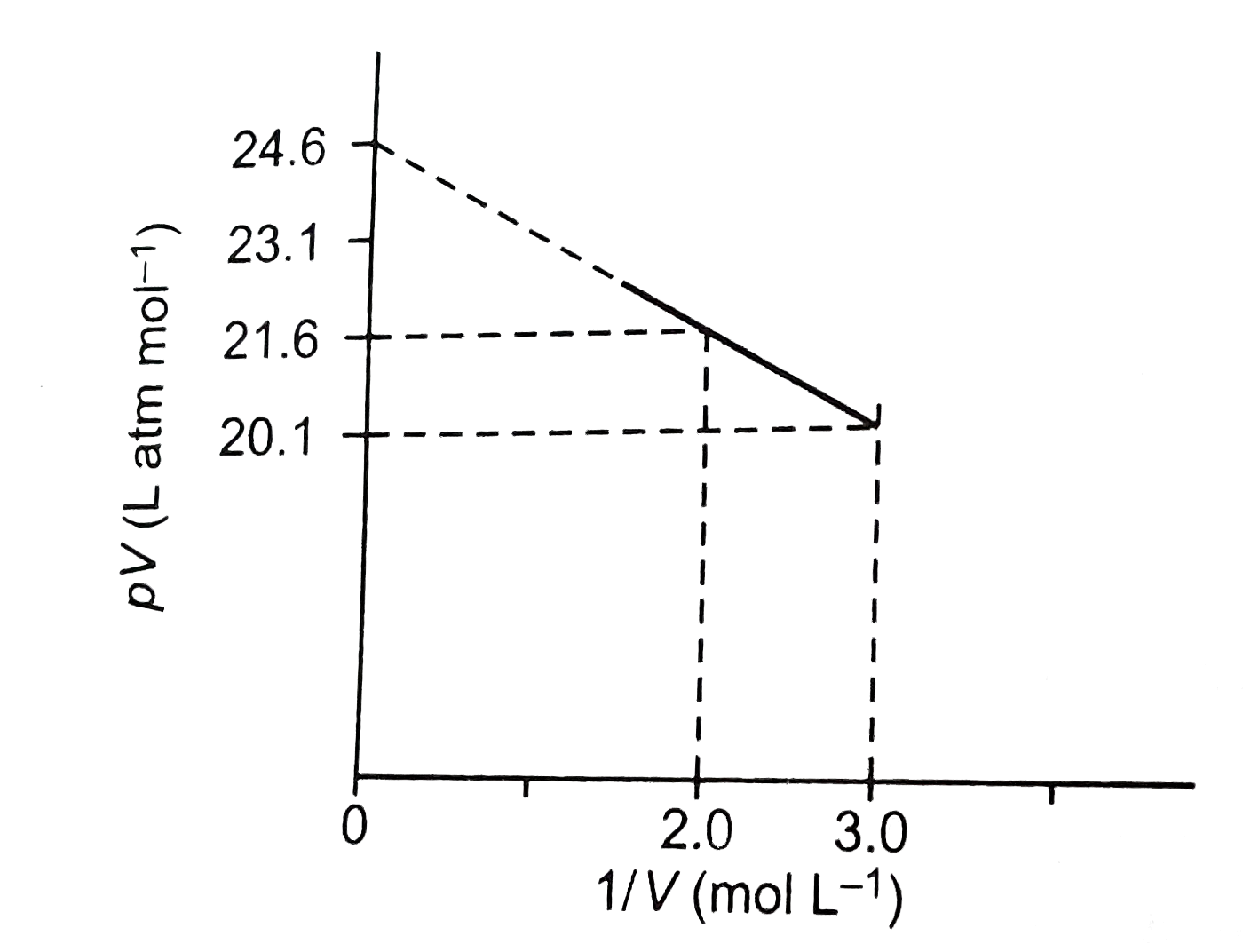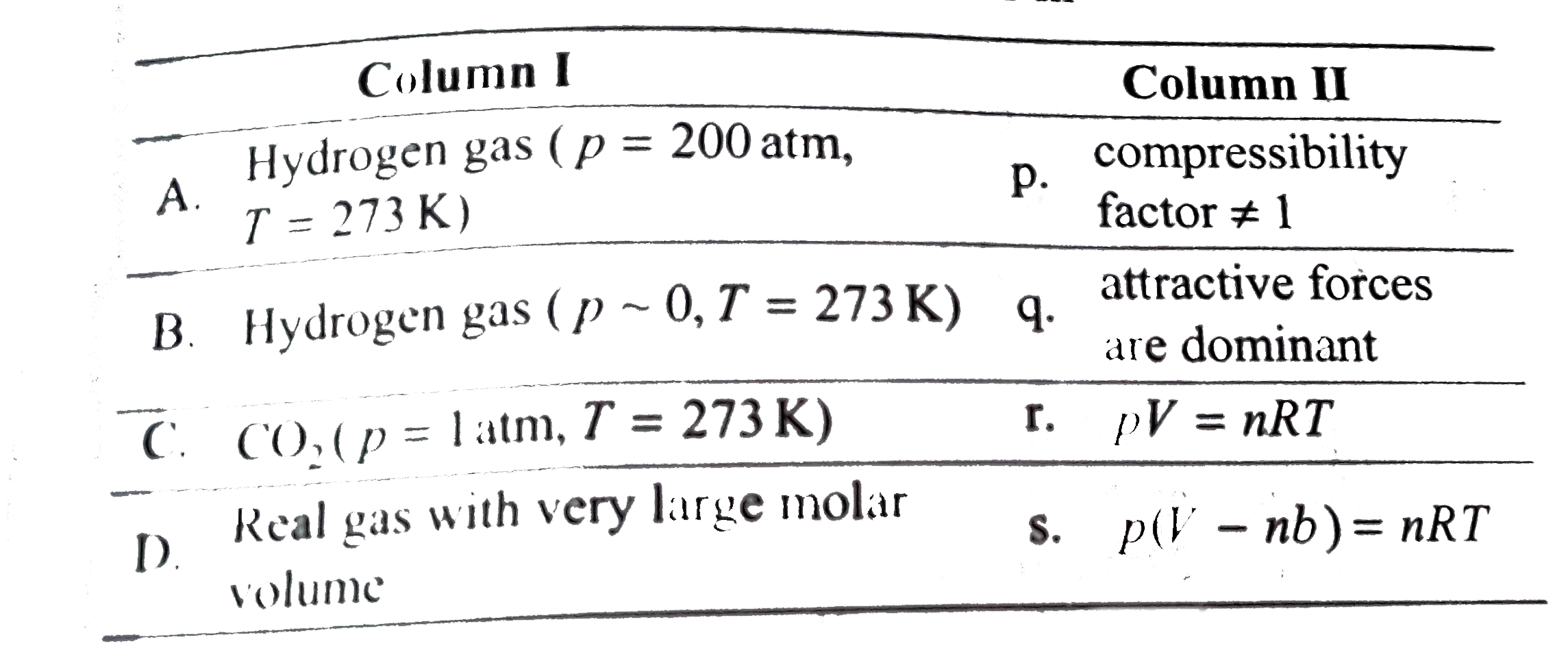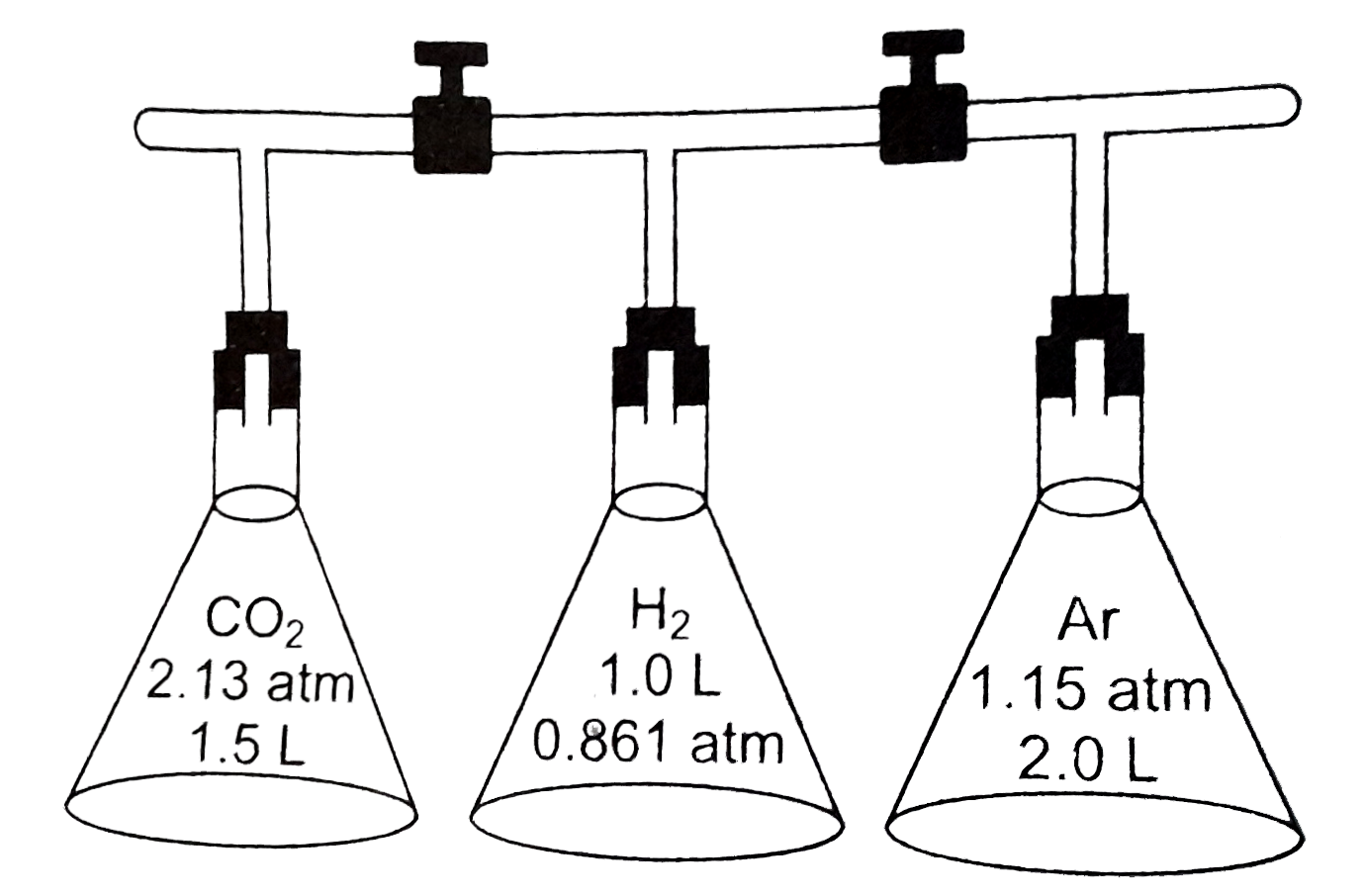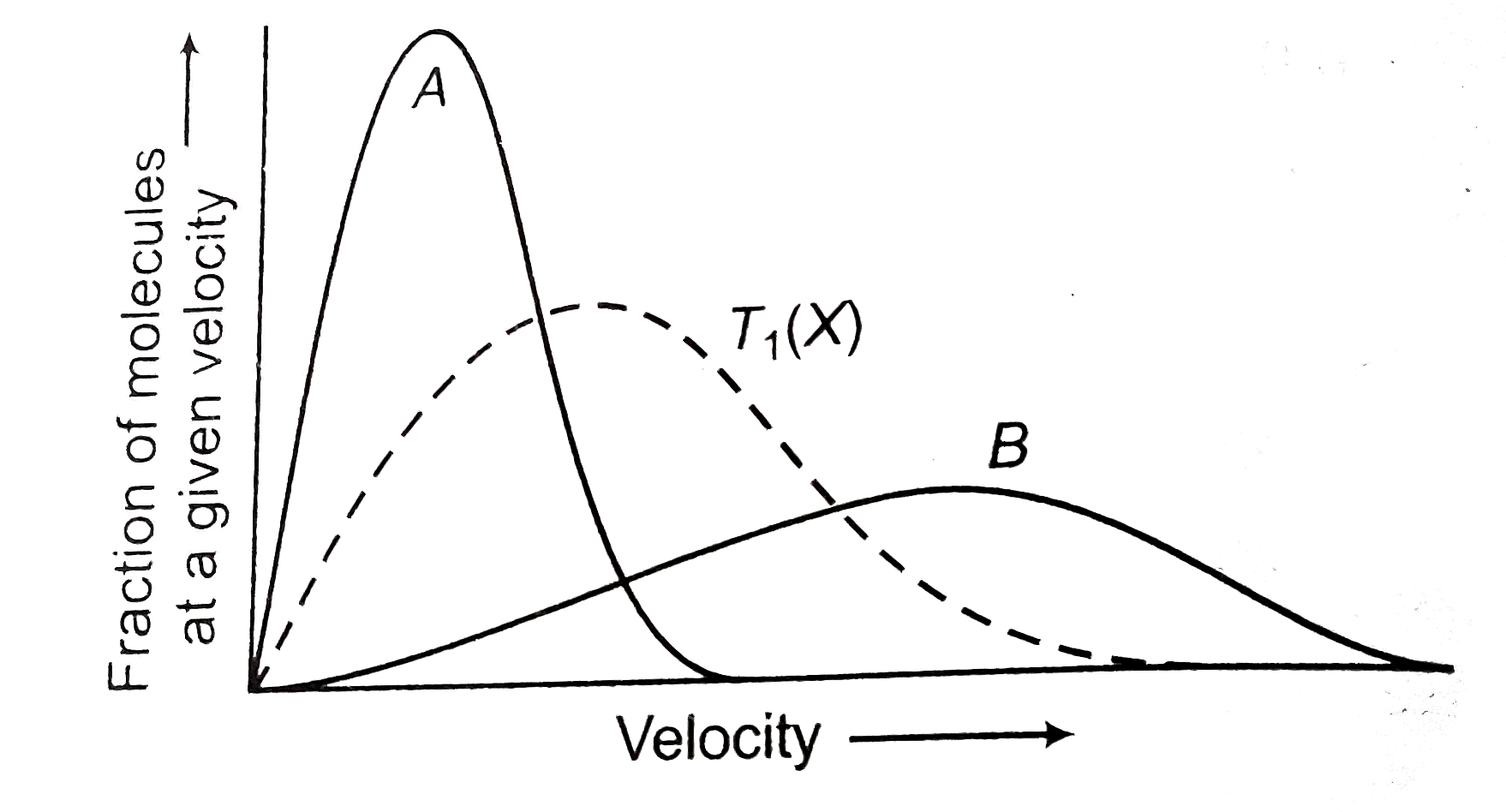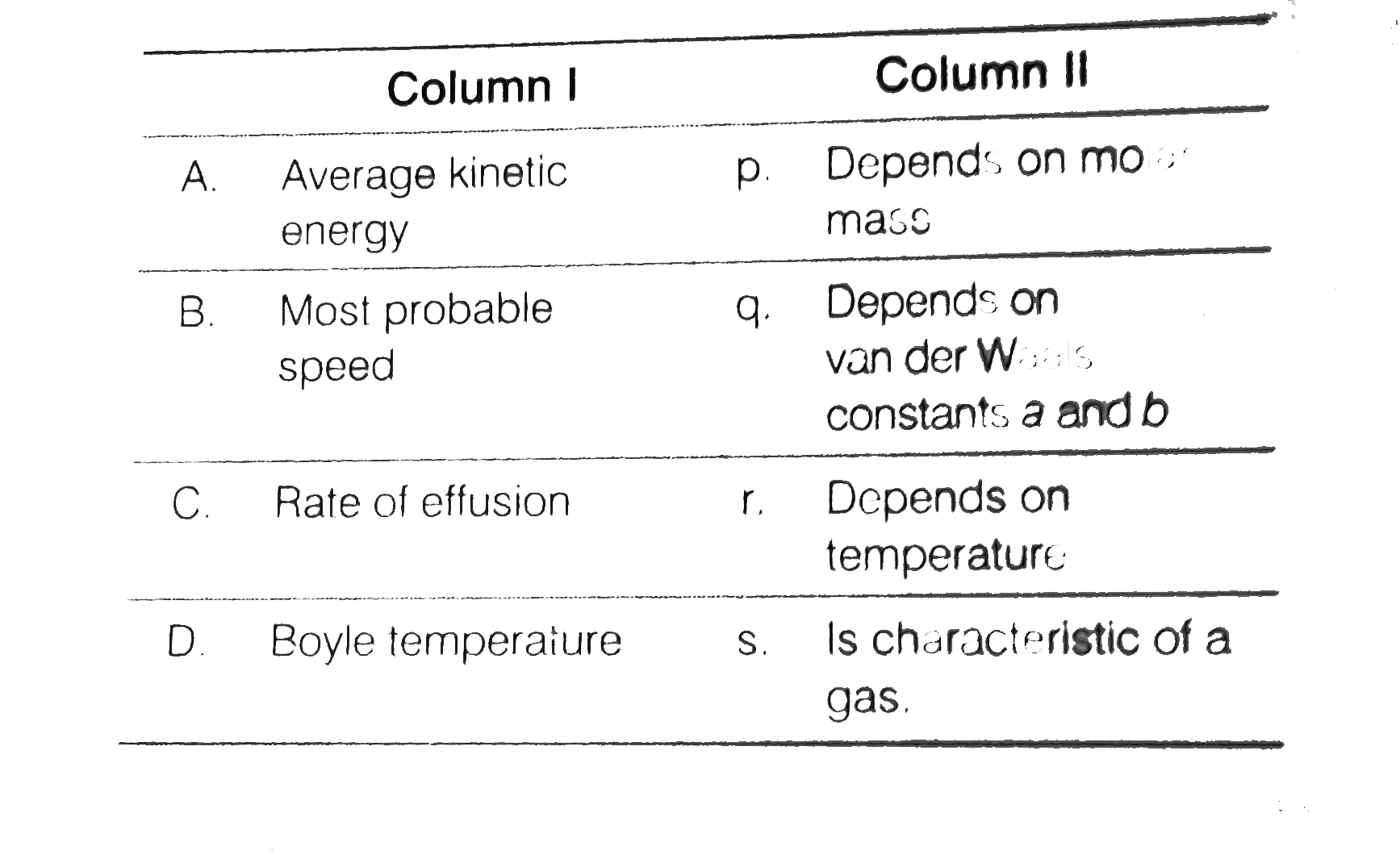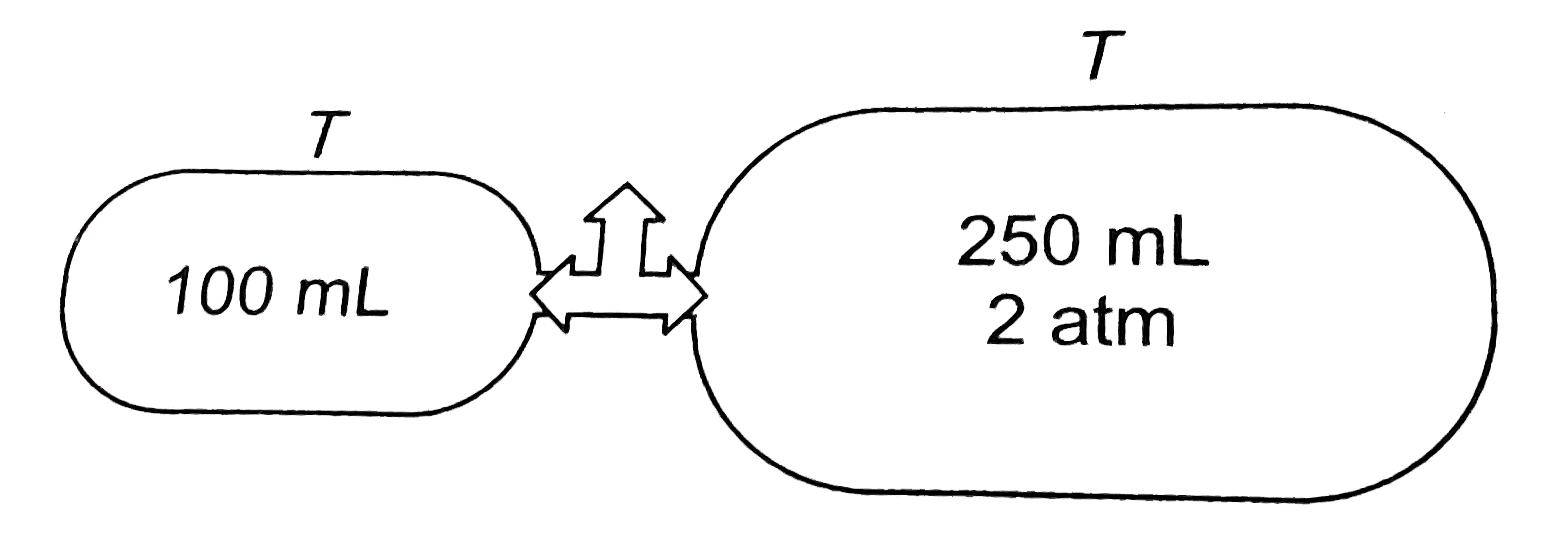MATCH THE COLUMN from IIT-JEE PREVIOUS YEAR (CHEMISTRY) STATES OF MATTER for Class 12
| Class 12 | CHEMISTRY |
| Chapter | STATES OF MATTER |
| IIT-JEE PREVIOUS YEAR (CHEMISTRY) | MATCH THE COLUMN |
| Medium | English |
| Academic Year | 2023-2024 |
Question 40
X and Y are two volatile liquids with molar weights of 10gmol−1 and 40gmol−1 respectively. Two cotton plugs, one soaked in X and the other soaked in Y, are simultaneously placed at the ends of a tube of length L=24 cm, as shown in the figure.
The tube is filled with an inert gas at 1 atm pressure and a temperature of 300K. Vapours of X and Y react to form a product whichh is first observed at a distance dcm from the plug soaked in X.
Take X and Y to have equal molecular diameters and assume ideal behaviour for the inert gas and two vapours.
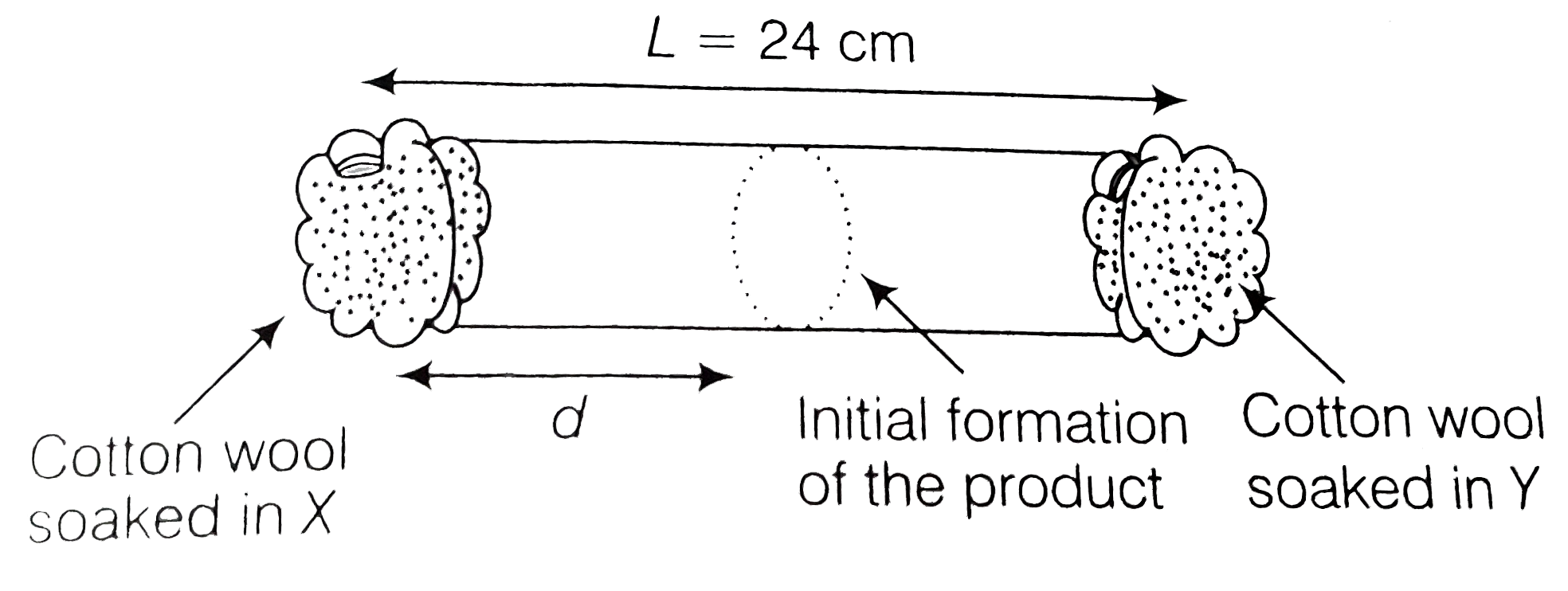
The experimental value of d is found to be smaller than the estimate obtained using Graham's law. This is due toView SolutionQuestion 41
X and Y are two volatile liquids with molar weights of 10gmol−1 and 40gmol−1 respectively. Two cotton plugs, one soaked in X and the other soaked in Y, are simultaneously placed at the ends of a tube of length L=24 cm, as shown in the figure.
The tube is filled with an inert gas at 1 atm pressure and a temperature of 300K. Vapours of X and Y react to form a product whichh is first observed at a distance dcm from the plug soaked in X.
Take X and Y to have equal molecular diameters and assume ideal behaviour for the inert gas and two vapours.
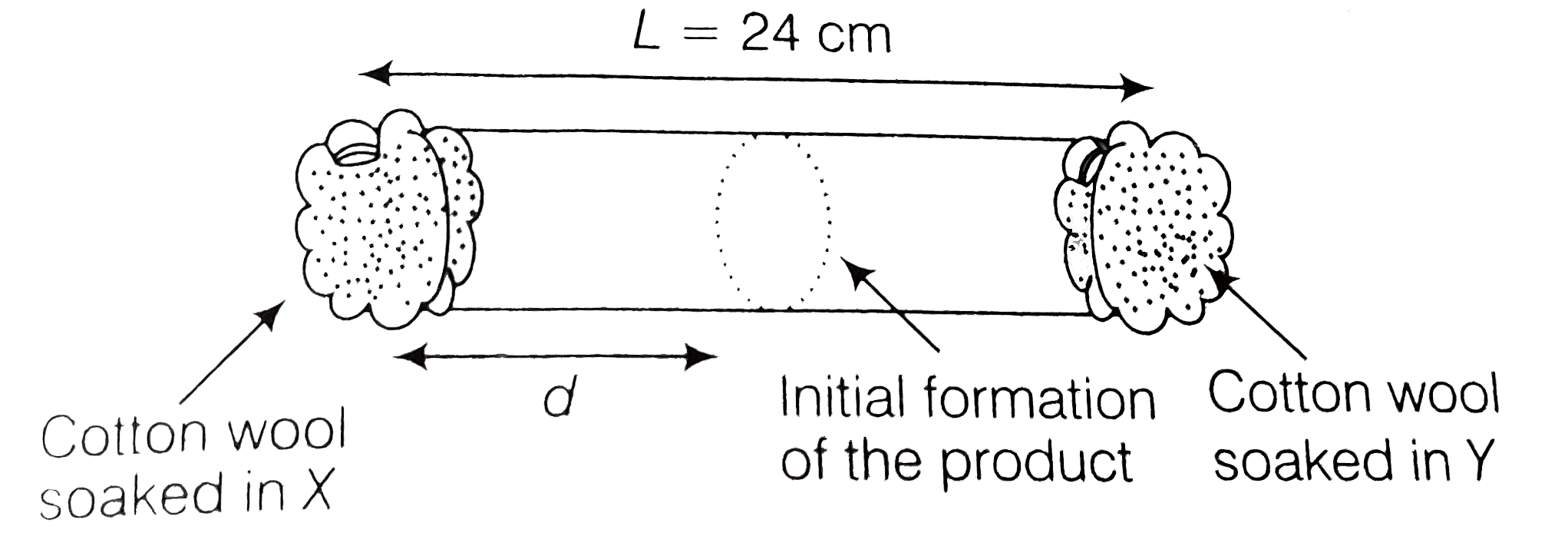
The value of d in cm (shown in figure), as estimated from Graham's law, is View SolutionQuestion 53
The diffusion coefficient of an ideal gas is proportional to its mean free path and mean speed. The absolute temperature of an ideal gas is increased 4 times and its pressure is increased 2 times.As a result, the diffusion coefficient of this gas increases x times. The value of x is........View SolutionQuestion 59
The density of the vapour of a substance at 1atm pressure and 500K is 0.36kgm−3. The vapour effuses through a small hole at a rate of 1.33 times faster than oxygen under the same condition.
(a) Determine (i) molecular weight, (ii) molar volume (iii) compression factor(Z) of the vapour, and (iv) which forces among the gas molecules are dominating, the attractive or the repulsive?
(b) If the vapour behaves ideally at 1000K, determine the average translational kinetic energy of a molecule.View SolutionQuestion 62
(a) One mole of nitrogen gas at 0.8atm takes 38s to diffuse through a pinhole, whereas one mole of an unknown compound of xenon with fluorine at 1.6atm takes 57s to diffuse through the same hole. Calculate the molecular formula to the compound.
(b) The pressure exerted by 12g of an ideal gas at temperature t∘C in a vessel of volume Vlitre is 1atm. When the temperature is increased by 10∘C at the same volume, the pressure increases by 10%. Calculate the temperature t and volume V. (Molecular weight of the gas is 120.)View SolutionQuestion 66
The composition of the equilibrium mixture (Cl2 2Cl) , which is attained at 1200∘C, is determined by measuring the rate of effusion through a pin hole. It is observed that a 1.80mmHg pressure, the mixture effuses 1.16× as fact as krypton effuses under the same conditions. Calculate the fraction of chlorine molecules dissociated into atoms (atomic weight of Kr is 84).View Solution
2Cl) , which is attained at 1200∘C, is determined by measuring the rate of effusion through a pin hole. It is observed that a 1.80mmHg pressure, the mixture effuses 1.16× as fact as krypton effuses under the same conditions. Calculate the fraction of chlorine molecules dissociated into atoms (atomic weight of Kr is 84).View SolutionQuestion 68
An LPG cylinder weighs 14.8kg when empty. When full it weighs 29.0kg and the weight of the full cylinder reduces to 23.2kg. Find out the volume of the gas in cubic metres used up at the normal usage conditions and the final pressure inside the cylinder. Assume LPG to be n-butane with normal boiling point of 0∘C.View SolutionQuestion 70
A gas bulb of 1L capacity contains 2.0×1011 molecules of nitrogen exerting a pressure of 7.57×103Nm−2. Calculate the root mean square (rms) speed and the temperature of the gas molecules. If the ratio of the most probable speed to the root mean square is 0.82, calculate the most probable speed for these molecules at this temperature.View SolutionQuestion 71
At room temperature, the following reaction proceeds nearly to completion:
2NO+O2→2NO2→N2O4
The dimer, N2O4, solidfies at 262K. A 250mL flask and a 100mL flask are separated by a stopcock. At 300K, the nitric oxide in the larger flask exerts a pressure of 1.053atm and the smaller one contains oxygen at 0.789atm. The gase are mixed by opening the stopcock and after the end of the reaction the flasks are cooled to 220K. Neglecting the vapour pressure of the dimer, find out the pressure and composition of the gas remaining at 220K. (Assume the gases to behave ideally)View SolutionQuestion 72
At 27∘C, hydrogen is leaked through a tiny hole into a vessel for 20min. Another unknown gas at the same temperature and pressure as that of hydrogen is leaked through the same hole for 20min. After the effusion of the gases, the mixture exerts a pressure of 6atm. The hydrogen content of the mixture is 0.7mol. If the volume of the container is 3L, what is the molecular weight of the unknown gas?View SolutionQuestion 79
When 2g of a gas A is introduced into an evacuated flask kept at 25∘C, the pressure is found to be 1atm. If 3g of another gas B is then heated in the same flask, the total pressure becomes 1.5atm. Assuming ideal gas behaviour, calculate the ratio of the molecular weights MA and MB.View SolutionQuestion 80
At room temperature, ammonia gas at 1atm pressure and hydrogen chloride gas at Patm pressure are allowed to effuse through identical pin holes from opposite ends of a glass tube of 1m length and of uniform cross- section. Ammonium chloride is first formed at a distance of 60cm from the end through which HCl gas is sent in. What is the value of P?View SolutionQuestion 82
The pressure in a bulb dropped from 2000 to 1500mmHg in 47min when the contained oxygen leaked through a small hole. The bulb was then evacuated. A mixture of oxygen and another gas of molecular weight 79 in the molar ratio of 1:1 at a total pressure of 4000mm of mercury was introduced. Find the molar ratio of the two gases remaining in the bulb after a period of 74min.View SolutionQuestion 95
Which of the following is/are correct?
(I) If liquid "kryptonite"(from Superman's home planet), wilth a denisty twice that of mercury is used in a barometer on earth, one standard atmosphere of pressure would sport a column of mercury 380 mm in height.
II. At constant volume and number of moles of gas, the pressure exhibited by an ideal gas is directly proportional to its absolute temperature.
III At standard temperature and pressure (STP), the volume of a mixture of gases containing 0.400 mole H2,0.600 mole N2 and 1.00 mole of O2 is 44.8L and the mole fraction of N2 is 0.300.View SolutionQuestion 99
For a non-ideal gas, the compressibility factor (Z) is defined as:
Z=pVmRT,Vm= Molar volume
Compressibility of an unknown gas at 600K and 1.0 atm was found to be 1.2 Also this gas was found to effuse 1.58 times slower than the pure methane gas under identical condition. Answer the following three questions based on the above mentioned information and the information provided in an individual question.
Density of the gas in the above mentioned experimental condition isView SolutionQuestion 100
For a non-ideal gas, the compressibility factor (Z) is defined as:
Z=pVmRT,Vm= Molar volume
Compressibility of an unknown gas at 600K and 1.0 atm was found to be 1.2 Also this gas was found to effuse 1.58 times slower than the pure methane gas under identical condition. Answer the following three questions based on the above mentioned information and the information provided in an individual question.
Molar volume of the gas in the given experimental condition is View SolutionQuestion 101
For a non-ideal gas, the compressibility factor (Z) is defined as:
Z=pVmRT,Vm= Molar volume
Compressibility of an unknown gas at 600K and 1.0 atm was found to be 1.2 Also this gas was found to effuse 1.58 times slower than the pure methane gas under identical condition. Answer the following three questions based on the above mentioned information and the information provided in an individual question.
The value of the Virial coefficient 'B' in the Virial equation is,
(Ignore the higher terms from equation during calculation)
Virial equation : Z=1+BVm+CV2m+DV3m+.........,Vm is the molar volumeView Solution

